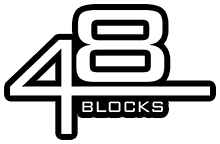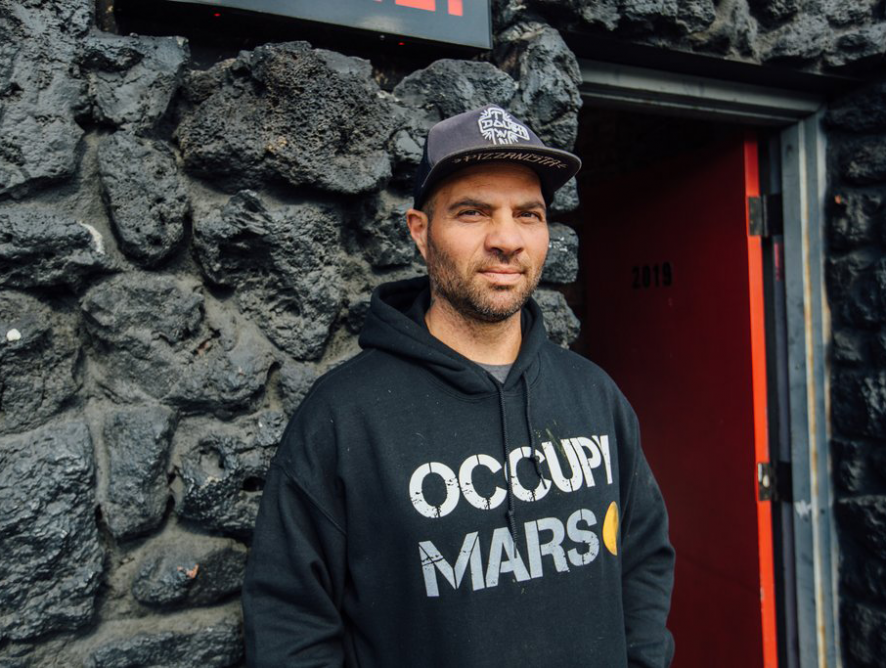Salman Agah is an early street innovator. His part in the first Real video had many skaters shaving their heads and made skating with a cast fashionable. He is also one of the pioneers of switch skating. He was the first to do it powerfully and make it look normal stance. Jason Dill credits Agah as being a major influence during his formative years. That says more about Salman’s style than I ever could. In the following interview, Agah goes into detail about his history in skateboarding. He’s witnessed a lot and influenced even more during his time on the board.
48 Blocks: Let’s start with San Jose. You grew up skating around there, and if memory serves me correct Steve Caballero hooked you up with Powell. Can you give us a little insight into the scene and what it was like?
Salman: The San Jose skate scene was full of vitality. I grew up in south San Jose in a suburb of Silicon Valley. It was and is unique to this day for being host to a hub of talent virtually unmatched with exception to probably Los Angeles. As a skater growing up in SJ in the ’80s, it seemed as if there was some sort of event every weekend. Thinking back on that time, I remember a DIY attitude amongst the older skaters. There is a park in Los Gatos, where every weekend throughout the summer there were skate jams. Most skaters that started skating within the last decade have probably never really had the opportunity to experience a skate jam, especially the sort that took place in SJ.
A jam was simply a place (like a bus depot, park and ride, tennis courts, or a park) where a group of skaters would bring obstacles like jump ramps, railslide bars, banks, curbs, or whatever else was skateable and set them up for all the skaters around to come skate for free. Most of the time there was also a barbecue and some form of music with records or tapes and a PA system. The jams were promoted with flyers, which resembled punk show flyers that were passed out in local skate shops and were also stapled to telephone and electric poles around town.
Simon Woodstock not only owned a skate shop in Campbell, but he was also notorious for hosting some of the most classic jams back then. He was definitely instrumental in the scene, and a catalyst for skateboarding in San Jose. There were lots of skaters that killed it. People that come to mind who were ripping are Tony Henry, Simon Woodstock, Tom Miller, Mike Prosenko, Corey O’Brien, Jeff Hedges, Brian Ferdinand, Greg Halic, John Fabriquer, Mike Yousefpour, Joe Spilero, Rick Moody, Ricky Windsor, Jeff Toland, Jason Adams, Shawn Mandoli, Edward Devera, Corey Chrysler, Tim Brauch, Dave Ashley, Kit Ericson, Steve Caballero, and so many more. Some of the skaters I mentioned are not from SJ, but people would travel from Sac and other areas around SJ to skate.
Not long after the skate jam era, Corey O’Brien and friends opened the San Jose Warehouse, which at first was a private skatepark in downtown San Jose. Some of the people that I met skating there were guys like Jeff Grosso, Mark Gonzales, Jason Jessee, Jim Namba, Ross Goodman, Jeff Kendall, Bod Boyle, Steve Douglas, Jason Ellis, Gary Valentine, Ben Schroeder, Tommy Guerrero, Jim Thiebaud, and lots of other skaters from SF. San Jose was also one of the first host cities for the Visalia YMCA skate camp. Santa Clara University hosted it one or two years and we’d go barge the obstacles. I remember skating there with Matt Hensley and Tom Knox. We couldn’t skate at the camp long without getting kicked out, but we’d go as often as we could get down there. Carl Hyndman would always kick us out.
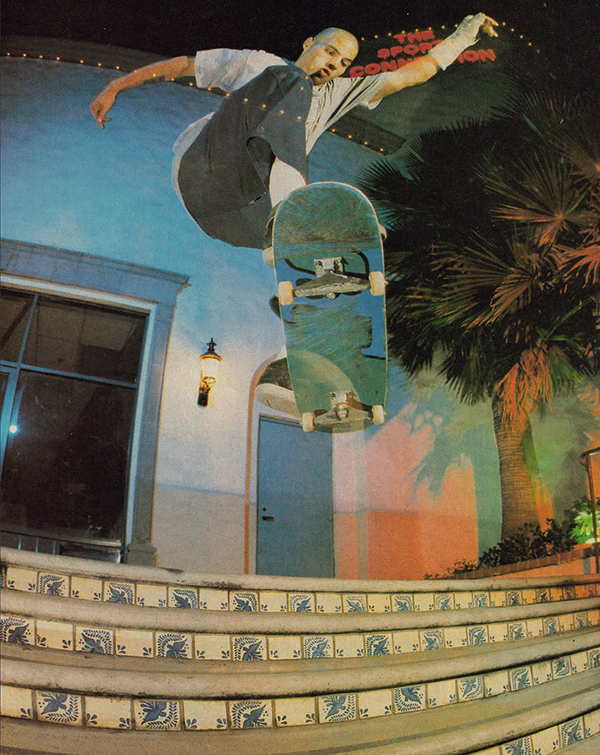 48 Blocks: Being that some of the best skaters out right now are from San Jose. Do you have any memories of current pros from when they were little kids?
48 Blocks: Being that some of the best skaters out right now are from San Jose. Do you have any memories of current pros from when they were little kids?
Salman: I have lots of memories of skaters when they were kids. Jason Adams is probably one of the most well known skaters from SJ that I grew up skating with that is still relevant. We weren’t into much besides skating when we were teenagers. We did the usual experimentation with partying and girls or whatever, but for the most part there isn’t much to disclose. Skaters such as Marc Johnson and Louie Barletta aren’t from SJ, but came there because of the scene.
48 Blocks: You were one of the original guys on Real. How did that come together and what was it like being a part of such a legendary team?
Salman: Contrary to popular belief, I actually wasn’t one of the original guys sponsored by Real. The OG team was Tommy Guerrero, Jim Thiebaud, Henry Sanchez, Rob “Sluggo” Boyce, Corey Chrysler, Tony Henry, and maybe a couple others. The first board I received from them was a used Tommy Guerrero pro model that TG rode at the San Jose pro mini ramp contest. I learned over time that Jeff Klindt didn’t think I had what it took to be pro. So it took awhile to actually get sponsored by them.
I used to go up to the city and go skate with Jim and Tommy a few days a week around this time. When I finally did get on they still didn’t make boards. When Real was conceived I was still riding for Powell-Peralta. Being sponsored by Powell was surreal when it all went down. It was really cool and strange all at the same time. I remember being asked to come down to Santa Barbara where it would host Am-Jams. All the ams on the team would be there to skate together. Powell pros would also show up and skate. It was amazing what they did for us. The Am-Jams were full weekend sleepovers at the Powell-Peralta headquarters. We had to have sleeping bags and sleep on the floor. There was a skatepark outside for all of us to skate. They had the mini ramp folded out. There was catering during the day and for dinner we’d all go out together.
Thinking back on it now, I can’t imagine how the hell they managed all of us. I remember one time where a bunch of us including Guy (Mariano), Gabriel (Rodriguez), Paulo (Diaz), Rudy (Johnson), Jason Adams, Shawn Mandoli, Jovontae (Turner), and I stayed at Sean Cliver’s apartment. I’m sure he thought we were so annoying after that sleepover. We stayed up all night talking shit to one another. The NorCal crew was on the bottom floor and the LA guys up in the loft. We all know what happened shortly after this. Guy and Rudy went to Blind, I went to Real, Jovontae went to Planet Earth, Gabriel went to 101 etc.
Life back then was simple and awesome. My parents had a French bakery and café in SJ called Our Daily Bread. We made everything there, roasted our own coffee and served breakfast, lunch, and dinner. I worked there to make money and so did lots of my friends. The parking lot of my parent’s café is where most of us learned to skate. People from all over the world came to skate with us too. Even Clause Grabke skated that parking lot. Cab skated there. Lots of Santa Cruz’s sponsored ams skated there, heads from SF—it was the spot. The first handrails we skated were there and they were three stairs long. Kids can’t congregate in parking lots like we did back then. We used to skate the curb right in front of a liquor store where there was two-way traffic. Sometimes there were more than 30 of us. We’d skate that curb all day and night. At this time in the ’80s, I skated with Jason Adams, Shawn Mandoli, Tim Brauch, Troy Cooper, Tony Henry, Dave Ashley, Corey Chrysler, Tom and Mike Miller, Chris Droukas and lots of other local skaters.
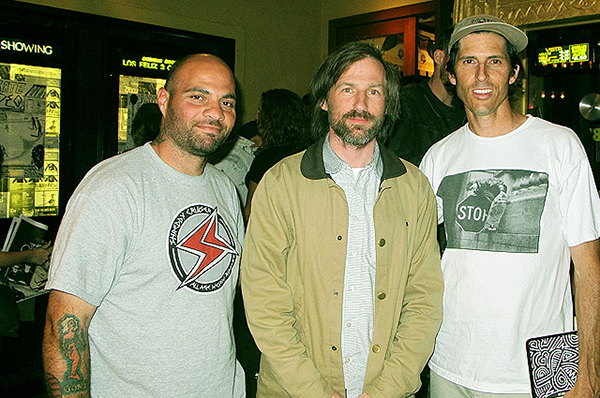 48 Blocks: You were one of the early innovators of switch-stance skating. Your part in the Real video was almost all switch. I remember reading in a magazine that you would skate switch at spots the whole time. What made you decide to focus on this and how did it impact your style?
48 Blocks: You were one of the early innovators of switch-stance skating. Your part in the Real video was almost all switch. I remember reading in a magazine that you would skate switch at spots the whole time. What made you decide to focus on this and how did it impact your style?
Salman: Now that I’ve had years to reflect on why and how I started skating switch stance, I realize there are multiple reasons. Two influences on my skating in the ‘80s were Mark Gonzales and Natas Kaupas. Both of these guys are well known as innovative street skaters. Over the years Mark has continued to inspire and annoy skaters everywhere with his eccentric personality and style. Part of my taking to skating switch stance came purely from the idea in my mind that skateboarding was about progression. I wanted to progress! Like all skaters, I had my limitations, some physical and some mental. The physical side of my limitations had to do with just being a fat kid. I had a hard time grabbing my board with my hands. I had a hard time doing street plants, but managed to do all right on jump ramps. Due to being fat, I was naturally inclined to try tricks that had nothing to do with grabbing my board.
The way that Natas fits into the equation is that I was in SF around ‘88 or ‘89 and saw Natas nollie straight up one of the benches at Brown Marble. After seeing that, I went home and tried to do every variation of a nollie that I could think of. I even had an ad for Real that had four or five sequences of nollie tricks, one of which was a nollie kickflip on the flat ground. At the time, I guess it was groundbreaking. But to me, it was just what I was doing. I didn’t have any ideas besides that.
Doing lots of nollie tricks made skating backwards very natural when I flipped it around. Another factor had to do with just fiending to skate when I injured my front ankle. I had a rolled front ankle and wanted to skate so badly that I just skated switch. The thing that really made my switch skating seem so natural in the late ‘80s and early ’90s is the fact that when I started skating, I pushed mongo. I quickly learned to push non-mongo, but when I started to focus on skating switch, it just made it look like I’d been pushing that way naturally, which I actually had. Finally, I knew intuitively that to have my own identity in skateboarding, I needed to have my own thing going. Nollie tricks, switch stance and wearing a cast for years basically became my trademarks as I got sponsored and turned pro.
 48 Blocks: How did you originally hurt your wrist and how many times did you re-injure it?
48 Blocks: How did you originally hurt your wrist and how many times did you re-injure it?
Salman: The way I first hurt my wrist was with a simple fall at Greer skatepark in Palo Alto, CA. I slammed doing a trick over a hip into one of the pools and broke my navicular / scaphoid bone in my left wrist. I probably re-injured it five or six times because I would get sick of my cast and cut it off prematurely. After the second surgery, I decided that I would wear a cast and just duct-taped it on when I skated.
48 Blocks : There was a classic Real ad about singing with the late Luciano Pavarotti. What was the story behind that?
Salman: The story behind the Luciano Pavarotti thing really, I have no idea. I think Jeff Klindt (R.I.P.) made up a story.
48 Blocks: Moving on, you skated for Lance Mountain’s company the Firm. What made you decide to leave Real?
Salman: Oh man you guys are going deep! Well, that is a long story. To be quite honest, after I was awarded Thrasher’s Skater of the Year in 1993, I was very burned out and confused. At the time, I remember declining to do a Pro Spotlight in Transworld because I was just exhausted. I never did it to this day. I didn’t know what to do at the time. On top of that, I had reached a major pinnacle in skateboarding at such a young age. In 1993, I was 21 years old, on top of the world, and very lonely. They say it’s lonely at the top, right? There was so much going on. I was drained physically, emotionally, mentally and on the verge of a breakdown. I turned to Christianity at the time, became a Born Again Christian and tried to proselytize the world.
During that time, I was convinced that I had to quit all of my sponsors and give up all of my worldly goods to please God. I did that. I proceeded to quit every sponsor. The only skater to have a signature shoe out on the market at the time was Steve Caballero. It was decided at Vans (without my knowing) that I would be the first skater of my generation to get a signature shoe. This kicked off the signature shoe craze that has lasted in skateboarding to this day. I was just devastated and torn during the whole time. Here I was being offered opportunities beyond my wildest dreams (and the dreams of most 21 year olds), and I was giving it all away. Walter Schoenfeld—who was the CEO of Vans at the time—was older and very understanding. Walter invited me to lunch during ASR and wanted to know how I was doing. I was as confused as ever, but went ahead and told him that I was quitting. Walter decided that Vans would go ahead and make my shoe anyway. I consented to this, as I didn’t have any responsibility to Vans to skate or make appearances or anything. He actually told me to just take the year off. I was amazed. When I quit Real, I didn’t really quit. I stopped being sponsored to satisfy a conviction I had at the time. For the record, Real was a great sponsor and was deeply committed to me. I’ve had nothing but respect for Jim Thiebaud and their whole organization from the time that I first got sponsored by the team in 1990. My decision to ride for Lance at The Firm came purely from the fact that I wanted to be around other skaters that shared the same faith. I also thought that I could help the company grow.
48 Blocks: Eventually you ended up with Black Label. Talk about the Label and working with Lucero.
Salman: Black Label is a great skateboard company. John really cares about all of the people that he sponsors and the products that he produces down to the minute details. Lucero to me really embodies what skateboarding is all about. I didn’t really enjoy being the team manager at Label, but it was an interesting learning experience. I wouldn’t say I’ve been off Label as much as I’ve just changed positions, going from being on the main team to being TM to being on the Legends team.
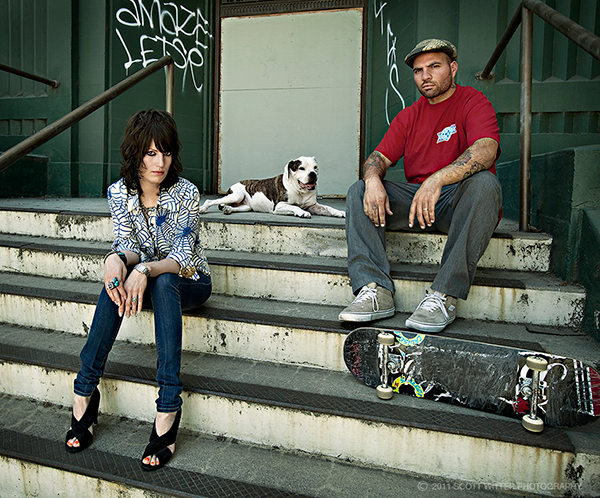 48 Blocks: Where are you currently living and what’s a normal day like for you?
48 Blocks: Where are you currently living and what’s a normal day like for you?
Salman: I currently live in downtown Los Angeles with my wife, Price, and our two dogs (Scout, an American bulldog and Xiola, a Shiba Inu). I try not to have normal days. I try to make every day an extraordinary day.
48 Blocks: How often and where are you skating these days?
Salman: I skate a couple times a week, mostly at Culver City skatepark, around the neighborhood, and also I live a block from the Berrics. I will probably take Berra up and skate there more in ’08.
48 Blocks: Watching skating evolve over the last few decades, who or what do you think has had the most impact on where it is today?
Salman: What has had the most impact on skateboarding over the last couple decades? Man, that is a good question that requires some thought. There are so many things, the companies that continue to give back by touring and supporting pros and ams, shops that promote skateboarding on a local level by having demos and contests, Thrasher, The Skateboard Mag, videos, skateparks, ESPN, MTV, video games, the Internet, mainstream fashion, and Go Skateboarding Day. I think all of those things have contributed greatly to generating interest in skateboarding globally.
48 Blocks: Can you give us your top five skate spots of all time?
Salman: Alpha Beta parking lot in San Jose, Safeway Block in San Jose, EMB, Wallenberg, and all painted curbs.
48 Blocks: Other than skateboarding what else are you passionate about?
Salman: Other than skateboarding, I’m passionate about my relationship with my wife and starting a family in the future. I really like to read and my goal for 2008 is to finish reading a book every two weeks. I’m passionate about motocross. I’d like to own and manage my own team one day. I’m also passionate about drag racing and plan on racing a top-fuel dragster in 2008.
48 Blocks: What’s one quote or saying that has influenced your life?
Salman: The only place where success comes before work is in the dictionary!
